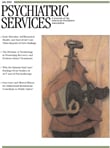When individuals with serious mental illness have access to evidence-based treatments, excellent outcomes are possible. Unfortunately, these treatments are typically not available. In this issue, Robert Drake and colleagues make the case for using information technology to transform care. They present a compelling vision in which use of informatics tools leads to clients and clinicians who are educated about treatment choices, are informed about client needs and preferences, and work together to ensure that care is client centered and effective.
Informatics have transformed society, but barely touched mental health care. Other areas of health care have seen transformation. The Veterans Health Administration (VHA) implemented a fully electronic medical record. In disorders such as diabetes, the VHA uses electronic data on patient characteristics, laboratory tests, prescriptions, and procedures to assess treatment quality. By using these assessments within a quality improvement infrastructure, the VHA has become a national leader in the provision of high-quality care. In mental health, however, a comparable process has been stymied because data on clients' symptoms, side effects, and functioning are not reliably documented. If mental health care is to catch up, managers need to have the will to implement informatics tools. At clinics, clients could be using computer kiosks that evaluate their clinical status and preferences and provide education. Clinicians could be using electronic medical records that provide access to client information, graphs of client change over time, reminders when treatments are overlooked, and educational updates—all at the point of care. Policy makers could be using client data to identify when access to care is poor and to demonstrate the value of improving treatment.
We studied this in EQUIP, a controlled trial of implementation of evidence-based practices for schizophrenia at four VHA medical centers in three states. Implementation included clinician education, client kiosks, care management, and evidence-based quality improvement that used kiosk data. The kiosks assessed client needs and preferences, provided tailored education, and produced a report to support shared decision making. Although clients believed that the information assessed was accurate, some psychiatrists resisted changing treatment, saying that any potential improvement was not worth the risks. Despite resistance, care did improve. Client data were used to reorganize services and to support care managers, who helped clients access treatments that met their needs.
Shared decision making requires an educated client plus a competent clinician who is willing to collaborate. We must remake our organizations so that they value client requests and offer services that meet client needs and preferences. Informatics tools can support this transformation by making client data routinely available and ensuring that the data are used to resolve barriers encountered every day by clinicians and clients.

